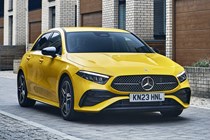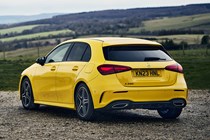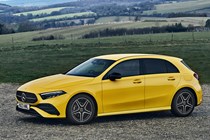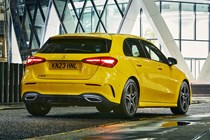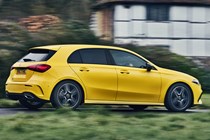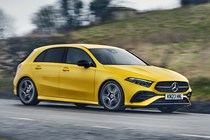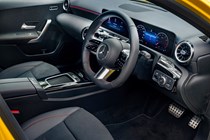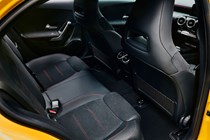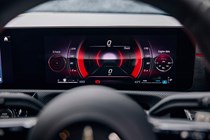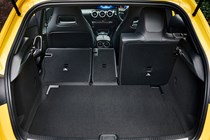
Mercedes-Benz A-Class engines, drive and performance
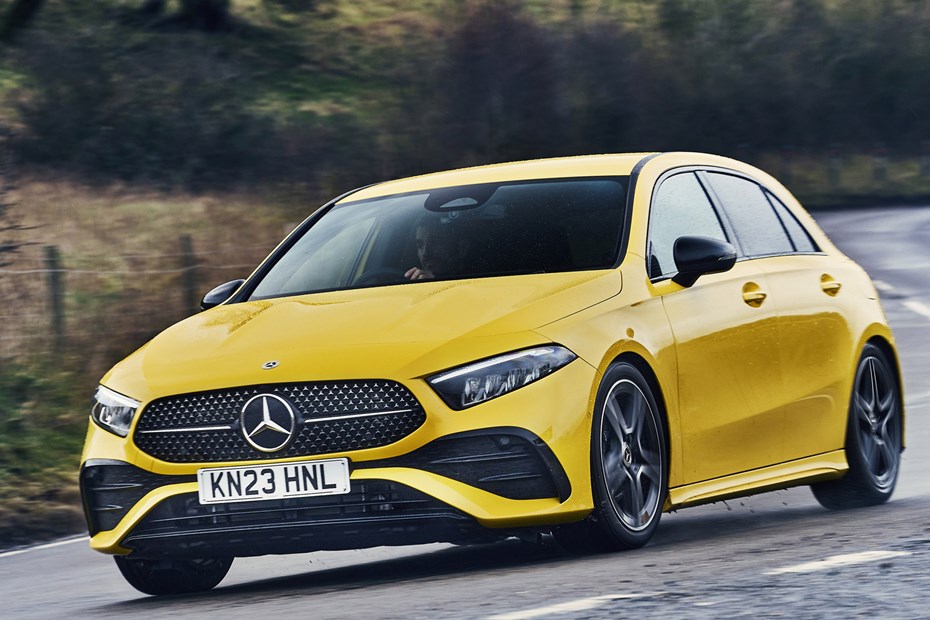
- Just three standard engines
- Petrol or diesel models available
- All models fitted with an automatic gearbox
Mercedes-Benz has rationalised the A-Class’s engine range since it was launched, stripping it back to just the best sellers.
Mercedes A-Class petrol engines
Two petrol engines are available. Badged A180 and A200, they’re based around the same engine but with different tuning. They use a 1.3-litre, four-cylinder engine sourced from Renault, but refinement is suitably ‘Mercedes’ for use in this car unless you thrash them. Both have mild hybrid tech to boost performance and reduce emissions.
The entry-level A180 delivers 136hp, which is on par with entry-level versions of all its rivals. It’s nippy rather than quick, with punchy acceleration around town, although it feels a little breathless on the open road. 0-62mph takes 9.2 seconds.
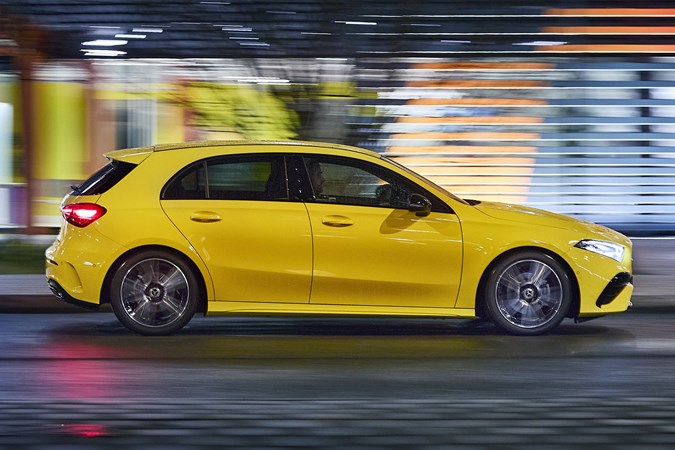
If you want a little more power, the A200 delivers 163hp for an 8.2 second 0-62mph sprint. It also delivers identical claimed fuel economy, which we suspect would actually prove to be a little better in the real world as the additional power and torque means you don’t need to work the engine as hard.
Both petrol engines are paired to a seven-speed dual-clutch automatic gearbox which offers smooth shifts but can get a little confused in stop-start traffic.
Mercedes A-Class diesel engines
It’s here that the model range is leanest compared to pre-facelift. There’s now just one diesel option – the A200 d is the sole survivor. The old A180 d and A220 d are now only available on the used market.
That’s not necessarily a bad thing, though. The A180 d always felt underpowered and unrefined for a Mercedes, and the A220 d added more performance – but anybody who wanted a fast Mercedes would have been better served by one of the petrol-powered AMG models. The A200 d is the best compromise, serving up 150hp and plenty of torque making it a perfect match for a diesel VW Golf.
The A200d uses an eight-speed automatic gearbox which, like the seven-speed of the petrols, is more than smooth and responsive enough.
Diesels are undoubtedly becoming less popular, even in company cars where plug-in hybrids and EVs are now proving more cost-effective. However, the A200 d’s claimed fuel economy of nearly 60mpg means it’s still a good choice, especially for those who cover big mileages.
Mercedes A-Class plug-in hybrid engines
The A250e plug-in hybrid is one of the more popular engines in the A-Class range. It pairs the engine from the A200 with an electric motor for a combined 214bhp, making it the most powerful A-Class outside of the AMG models.
It’s able to accelerate from 0-62mph in 7.4 seconds, but the main attraction will be its lower running costs. With a claimed electric range of up to 52 miles, it offers scope for very low running costs. That said, it’s been overtaken by the latest plug-in hybrid versions of the Audi A3 and Volkswagen Golf, which are able to travel 70+ miles purely on EV power.
Mercedes A-Class high-performance engines
The Mercedes-AMG A35 hot hatch performance model has a 2.0-litre four-cylinder turbocharged petrol engine that produces 310hp and 400Nm of torque.
There is an even more powerful version, named the A45 S, though we won’t touch too much on these as they both have separate reviews.
What’s it like to drive?
- Not the sharpest nor most comfortable hatchback
- Plenty of grip but could be more fun to drive
- Pleasant town car
The A-Class isn’t as focused towards sporty driving as a BMW 1 Series, but it still conducts itself well out on the road. All models get lowered comfort suspension, with wheel sizes growing from 17-inches on Sport Executive models, to 18s on AMG Line Executive and Premium, to 19 inches on AMG Line Premium Plus.
The smaller the wheel the better. The A-Class can cope with urban lumps and crevices, although you’ll hear and feel the suspension working away in all versions. Things improve the faster you go, although an Audi A3 blends comfort and body control better.
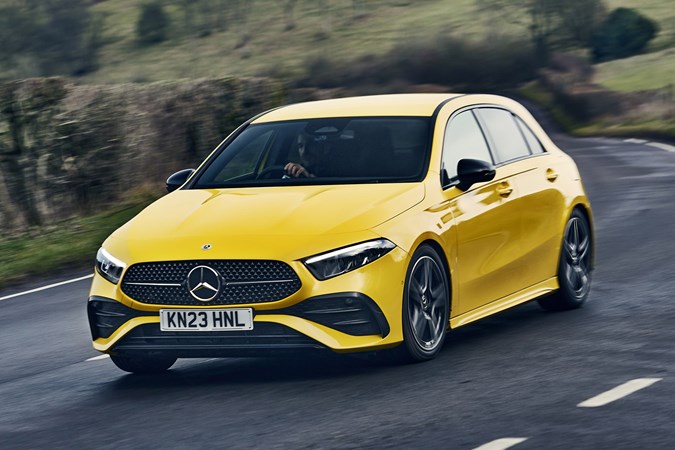
Gain a little more speed on a twisty country road and the A-Class displays ample stability and grip, even if the body does develop a little roll at higher speeds. It’s not up there with some of its rivals for sheer responsiveness, but there’s enough enthusiasm from the chassis to have some fun if you really want to. A significant part of this is thanks to the well-weighted steering which allows you to place the car accurately.
It’s likely that most of the time, however, the A-Class will be driven in town or on motorways and this is where it feels most at home. Cruising at high speed, you’d be forgiven for thinking you were driving a larger vehicle thanks to the very low wind noise from around the windscreen – although it does produce a lot of noise from around the rear windows.



